“The implementation of a trauma-informed approach is an ongoing organizational change process. A ‘trauma-informed approach’ is not a program model that can be implemented and then simply monitored by a fidelity checklist. Rather, it is a profound paradigm shift in knowledge, perspective, attitudes and skills that continues to deepen and unfold over time.”
–The Missouri Model: A Developmental Framework for Trauma-Informed Schools Initiative Publication
My middle child loves all things games. Board games, card games, video games…we play a LOT of games together. She even loves game shows. One of our favorite things to do together is to watch some of the classic game shows from the 1980s (thank you, Amazon Prime video).
One of our favorite games over the years has been Jenga. For anyone who has not played Jenga before, players take turns removing a block from a tower made from 54 blocks. The player has to then place that block on top of the tower, creating an increasingly unstable structure. If the tower topples when you are placing your block, the other player wins. One thing my daughter learned very quickly with Jenga is that pulling a piece out from the bottom is very dangerous.
In other words, strong foundations are critical.
I think about this game a lot in relation to our work at Origins. One of our mantras is that a trauma-informed approach is much more than completing a checklist of tasks. Sure, there are a lot of interventions that have the potential to build resilience as standalone initiatives–mindfulness techniques, restorative practices, trauma screenings (when done thoughtfully and responsibly), to mention just a few. These interventions can indeed have a big impact. But that impact can be so much more powerful and so much more sustainable if they are implemented within the context of a strong foundation.
Going back to the Jenga analogy, before introducing a change to the Jenga structure, we must first “set the table” with a solid foundation. If the bottom layers of the tower were built in a rush or were missing a brick or two, making changes to the rest of the structure can be dangerous.
So what does a strong foundation for a trauma-informed approach look like? We think there are at least five critical components: the language, the people, the why, the culture, and the plan. We will be exploring all of these in more detail in a series of blogs over the coming months, but let’s look at each of them briefly.
The Language
First, the language. Everyone–including the CEO or the Executive Director, middle management or program staff, and support staff–needs shared language. As an example of what we are talking about, let’s take the language that might be used to describe someone who is not taking the medications prescribed by their doctor. The medical field might have traditionally labeled this patient as non-compliant. A trauma-informed approach would encourage a discussion about why the patient is not taking the medication in the first place. Language matters. For this reason, we created The Basics, a training session that provides a shared language for the basic science behind the ACEs framework and what it means to develop a trauma-informed and resilience-building approach. (We talk more about the importance of language in our blog here)
The People
Second, the people. Relationships can be a source of trauma and a solution. Strong relationships built on inclusivity, collaboration, and teamwork help us build resilience and improve experiences and outcomes. A trauma-informed approach requires building effective teams and evaluating how we can create community, both within and outside of organizations. Who is on your implementation team and who is leading it? Are you building relationships with community partners? Who has a seat at your team’s table and who might be missing? How will you meaningfully include the voices of those who are missing from your table? Even better, how can you set a place for them? As the saying goes, teamwork makes the dream work. And integrating a trauma-informed approach is definitely a team sport.
The Why
Third, the why. Understanding “why you do what you do” is an important brick in the foundation and can help articulate a clear vision and mission. Knowing why that Jenga tower is being built is a critical piece that supports its sustainability. As said by comedian Michael Jr. “When you know your why, your what has more impact because you’re walking in or towards your purpose.”
The Culture
Fourth, the culture. All organizations, communities, and families have a culture, whether it has been created intentionally or not. Taking the time and creating the space to be intentional about building a culture that supports and sustains your vision and mission is essential. As management guru Peter Drucker reminds us, “culture eats strategy for breakfast.” Part of being intentional is articulating a set of values for your organization or community that will support trauma-informed principles and practices and a resilience-building approach. Those values will help guide your implementation.
The Plan
Last, and certainly not least, the plan (which is what everyone always asks for!). Operationalizing a trauma-informed approach requires a concrete implementation plan with specific goals and objectives. A good implementation plan starts with an assessment of what the organization is already doing to integrate the approach and identifying opportunities for improvement. Prioritizing these findings and translating them into concrete goals is critical to getting out of the starting gate with this approach. All of this requires an appetite for risk-taking and a tolerance for mistakes.
These five things–the language, the people, the why, the culture, and the plan–don’t look very different from the necessary steps for any sustainable planning process. Indeed, a trauma-informed approach doesn’t exist in a vacuum and can’t be separated from foundational planning work.
We explore all of these concepts in much more detail in our Resilience Champion Certificate program (and will also be doing so in our upcoming blog series!). This self-paced course (which includes access to The Basics) will guide you as you move from trauma-aware to trauma-informed and trauma-responsive. You and/or your team will work through one section each week to help you establish a foundation, create goals, and identify concrete steps you can take to sustain a trauma-informed and resilience-building approach in your specific setting.
Strong foundations matter in organizations and in games. I’ve reached the point where my tween daughter beats me in most games we play (and I am definitely not the type to let her win) with a few notable exceptions. Coming closer (without going over) to the correct prices when we watch The Price is Right together is one of those exceptions. I attribute that to my decades of experience going to the grocery store. And that foundation gives me the edge.







 Getting Started: A Guide from Trauma to Resilience
Getting Started: A Guide from Trauma to Resilience
Leave a Reply
Want to join the discussion?Feel free to contribute!